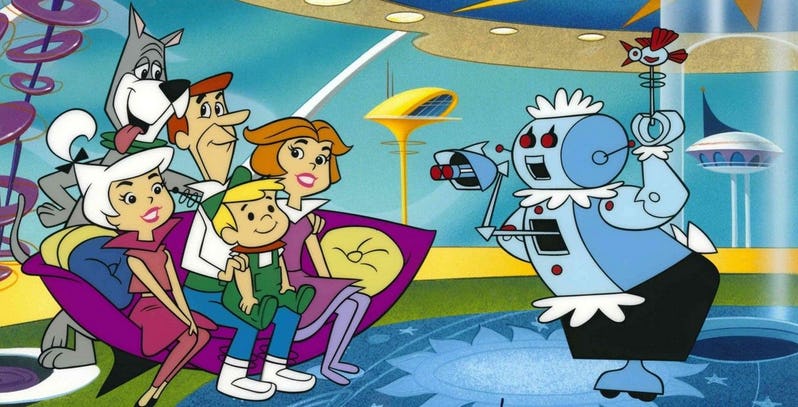
Followers know that I am fascinated by the visions of TV and movie writers of the 1960s and 70s. These were my formative years and like many in my generation, John F Kennedy and the American space program and race to the moon with the USSR captivated my imagination. I read every science fiction book in our public libraries (Asimov, Bradbury, Clarke, Heinlein, Herbert, L’Engle, LeGuin) and religiously watched every Sci-Fi TV show or movie, no matter how silly or campy (remember “I Dream of Jeannie” and the original “Lost in Space”?)
But there were a few programs from that era that were not only social commentaries of that time, but also had powerful predictive power of the future. “Star Trek” and its brilliant producer and writer, Gene Roddenberry, certainly qualifies for this distinction. But so does a prime time cartoon series from the 1960s, “The Jetsons”. The number of predictions made by the Jetsons, whether serious or whimsical by the writers, is incredible. I am posting here an article from 2016 by Danijel Striga (https://www.linkedin.com/in/danijelstriga/). In this article, Danijel notes several references in the series that predicted the future. I am sure in the years to come, we will see even more of the artists / writers dreams come true, including personalized, and possibly autonomous, flying vehicles.
The series has taken on a cult-like following due to its brilliance (whether or not, intended by the creators). Economist Jeffrey Tucker proclaimed in an in his book: “Its a Jetsons’s World: Private Miracles and Public Crimes” (you can download a free copy here), “distinguished in science-fiction lore by the fact that it is a rare attempt in this genre that actually succeeds in predicting the future.”
Many others have written insightfully regarding this classic comic show. Striga does a great job summarizing its predictions.
14 Times The Jetsons Predicted The Future
BY DANIJEL STRIGA – JUN 26, 2016In 1962, viewers were first introduced to an animated TV sitcom about a shiny future world of flying cars, sky-high cities and space ships. It was a world of The Jetsons: loving couple George and Jane, their kids Judy and Elroy, their dog Astro and their housekeeper Rosie the robot.
This Hanna-Barbera produced cartoon originally aired for a single season on ABC in early 1960s, but got its second and third seasons almost twenty years later. It was a show about a future presenting an ideal of the American family straight from the past. It made fun out of the gee-wiz attitude about the future and yet, in some ways, it was oddly prescient about our own times. We give you the list of 14 times The Jetsons predicted the future.
14 ROBOT SERVANTS
Housekeeping robot Rosie is quite possibly the most iconic character from The Jetsons animated TV show. This is somewhat ironic since, aside of the show’s credits, Rosie appears in only two of the show’s 24 classic 1960s episodes. An outdated housecleaning model, Rosie is nevertheless beloved by the entire Jetsons family and helps take care of their home and kids.
Although we still don’t have robot servants, it isn’t for the lack of trying. There’s the French-produced Buddy the Robot that can patrol the house and answer the phone calls. Then there’s ASIMO, a Japanese robot developed by Honda. ASIMO – an acronym for Advanced Step in Innovative Mobility – can walk, run, use stairs and recharge itself when its battery gets low. It’s a far cry from Rosie the Robot, but we’re getting there.
13 TALKING ALARM CLOCKS
As seen in The Jetsons episode Space Camp, beds of the future come equipped with alarm clocks built into the bedposts. Not only that, but these are the talking alarm clocks that, in a voice of a prim and proper British butler, politely ask you to wake up for work before blaring a bugle right into your ear. And, since they’re voice-operated, you then get to de-activate them by groaning angrily.
Unfortunately, this is the kind of stuff you can actually buy today, if you’re in the mood. There are honest-to-god voice-activated alarm clocks that tell you when to wake up. Even more prevalent are the smartphone applications featuring all kinds of funny and “funny” voices to get you out of your warm bed on that cold, cold Monday morning. If you want even more interaction than that, look no further than Apple’s Siri, that never-ending cornucopia of corny internet jokes.
12 DOG TREADMILLS
In the show’s end credits, George Jetson takes his dog Astro for a walk. Since the Jetsons live in an apartment building high above the clouds, where can they even go? Why, to a dog treadmill, of course! As the credits can attest, this isn’t the perfect solution – especially when a cat appears – but it’s yet another ingenious, yet silly invention in the spirit of The Jetsons.
Dog treadmill may sound like the silliest, laziest invention imaginable, but it actually has its purpose. Many veterinary clinics use treadmills as a form of physical therapy for dogs suffering from various impairments, just as the treadmills are used in physiotherapy of humans. Dog treadmills are a bit different in their design, though: they have longer running surfaces and side rails that prevents the pet from falling off during the exercise.
11 POLLUTION
Did you ever wonder why the Jetsons live in a sky-high apartment building? Well, it’s not only because it looks awesome. Although never directly stating it, the show implies a much more practical – and darker – reason for this unusual architectural choice: the smog layer. As George Jetson’s boss Cosmo Spacely explains in one episode, his family company Spacely Sprockets was started way back in the twentieth century. However, it had to be moved to an elevated platform since the surface of the planet became massively polluted.
Hints don’t stop there. In the 1987 animated TV film The Jetsons Meet the Flintstones, George Jetson comments how, in his time, the grass has become an ancient history. In the series finale, the 1990 Jetsons: The Movie, the audience actually gets to see the buildings of the future rise above the smog layer in the morning.
10 FLAT-SCREEN TVS
There it is, in the very first episode of The Jetsons – a flat-screen TV. It’s a joke, of course: a television set that is the exact opposite of what TVs used to be like in the 1960s, when The Jetsons first aired. At the time, TV sets were huge, bulky boxes with tiny screens. And yet, they were a wonderful invention that brought sights and sounds from all over the world to your very own living room.
In the late 1990s, we all had cathode ray tube monitors connected to our computers: heavy things that took up way too much space. It was around that time that we first heard about the liquid-crystal displays in one of those news articles about Japanese scientists who experiment with all kinds of crazy stuff like the genetically-engineered fish that glow in the dark or the concrete made from moon dust. And yet, here we are, twenty years later, staring at our LCD screens. So thin! So light! Will the wonders ever cease?
9 VIDEO CHATS
Videophones have been a sci-fi staple for almost a century now. You can see them on the covers of the old magazines like Popular Mechanics and in the early sci-fi movies such as Fritz Lang’s 1927 sci-fi epic Metropolis or the 1930 sci-fi comedy Just Imagine. Naturally, such a time-honored prediction found its place in the world of The Jetsons.
The show features various makes and models of videophones. You have your cutesy videophones for your home as well as the more serious-looking business models. Then there are also public payphones called Visaphones. Of course, all of these machines are bulky pieces of hardware. Nowadays, we can video chat on our tablets, smartphones and PCs by using the applications such as Skype, FaceTime and Google Hangouts. Despite all that, it’s interesting to note that in everyday life, people still prefer to have phone chats without the whole video part.
8 SMARTWATCHES
Smartwatches are yet another time honored-staple of sci-fi. Dick Tracy could call up a police backup with a radio communicator in his watch while Michael Knight used a more advanced version of this gadget to talk to KITT in the Knight Rider. The Jetsons episode Elroy’s Mob features its own version of a smartwatch, used by one of Elroy’s classmates to watch The Flintstones during the class.
In April of 2015, Apple launched Apple Watch – a device combining numerous smartphone features with a simple design of a wrist watch. This unveiling brought instant attention to other similar devices, such as the Samsung’s Gear series. Around that same time, Pebble announced their own smartwatch project called Pebble Time. This product proved so popular that the Kickstarter campaign for it quickly became one of the most successful ones in the short but exciting history of this crowd-funding platform.
7 KIDS AND TECHNOLOGY
Let’s go back to that kid who uses a highly sophisticated piece of electronics to watch cartoons during his math class. In The Jetsons, this moment is played for laughs, but it’s the truth in this joke that makes it so funny. Kids love the new gadgets and are far more comfortable with them then their parents. In the world of The Jetsons, this trait is best personified by Elroy Jetson, who gets to play with jetpacks and anti-gravity boots, much to his parents’ chagrin.
This behavior was true even during the 1960s, when The Jetsons first aired. Baby Boomers grew up with radios, gramophones and TVs all around them. Decades later, Generation X had their VHS tapes, Walkmans and – joy of joys! – early video games and computers. Nowadays, babies who don’t even know how to read properly are perfectly comfortable using tablets and smartphones to play games and watch cartoons.
6 DRONES
In the opening credits of The Jetsons, we see George Jetson dropping his family one by one via the special flying pods that take them to their destinations. His flying car looks great but we still don’t have those, despite all the inventors who have tried to make similar flying cars commercially available.
On the other hand, flying pods are not completely unlike the modern drones. Unmanned aerial vehicles have been experimented with by the military at least since the World War I. It was the development of modern electronics and more reliable remote controls that made military drones a viable weapon. Nowadays, these overgrown model airplanes are slowly becoming ubiquitous in commercial use. They’re used by the government agencies to monitor borders and national parks, by the TV news crews trying to film big public events and – most famously – by the Amazon company that’s currently experimenting with a drone-based delivery service.
5 ROOMBAS
Although George Jetson works about nine hours per week, he isn’t happy about his job. At home, Jane Jetson has the same problem: she only has to push some buttons for the machines do all of the housework, yet she nevertheless complains about all the chores she has to do. Among various robots at Jane’s disposal, at least one looks somewhat familiar to a modern day viewer: it’s a tiny robotic vacuum cleaner. Just like the Roomba!
Since 2002, over 10 million Roombas have been sold worldwide. This tiny, battery-powered robot can clean the floors and use its sensors to avoid furniture as well as steep drops. Roombas have been featured in TV shows such as Breaking Bad and Parks and Recreation, but they’re far from the only robotic vacuum cleaners on the market. There’s also Electrolux Trilobite, Neato Robotics XV-11, Dyson 360 Eye as well as plenty of cheaper knock-off models.
4 DIGITAL NEWSPAPER
When The Jetsons premiered half a century ago, barely anyone could have predicted the emergence of the internet or the dramatic development of the information technology. It’s no wonder then to see people from this supposed future, no matter how silly it is, use books or read printed newspaper edition. However, even in this old, old cartoon, that’s not the only way people receive the news.
In at least one episode, George Jetson reads his news articles displayed on a TV screen in the comfort of his living room. He gets his newspaper digitally, just like we do today! But this isn’t all. In the opening credits of the show, you can see plenty of people who, while traveling to work, stare in their personal tiny hand-held TV sets. Are these some kind of tablets? They just might be! The future of The Jetsons may be closer to our own then we think!
3 3D PRINTED FOOD
The future of cooking is fully automated. In the world of The Jetsons, you press a few buttons on Food-a-Rac-a-Cycle and in a moment you get all kinds of food: eggs, bacon, milk, crunchy corn flakes, silent corn flakes… One can’t be sure about the actual taste of these meals, but, hey, it’s the speed that counts!
Now, we couldn’t possibly invent something like that in real life, couldn’t we? Well, with 3D printers we just might. 3D printers are an amazing invention: they’re the closest thing we have yet to a Star Trek replicator. 3D printers don’t exactly create things out of thin air, but they can be made to produce various products using the cheap synthetic materials. Now replace “cheap synthetic materials” with “Nutella” or “chocolate”, press a few buttons on your specially-designed culinary 3D printer and you just got yourself a whole new world of custom-shaped desserts!
2 PILLCAM
In the episode Test Pilot George Jetson is ordered by his boss to take a full physical checkup. In the office of Dr. Lunar (who looks a bit like Jon Hamm in Mad Men), George swallows a tiny robotic pill called the Peekaboo Prober. This tiny robot then travels around George’s body, doing an internal checkup while displaying the images of his insides on the screen.
Developed around 2004 by a medical technology company Given Imaging, PillCam is a tiny pill-shaped camera that can take black and white pictures inside the person’s digestive system. There are several models of PillCams, such as the one for studying the small bowel or the model designed for passing through the esophagus. Using the PillCam allows doctors to diagnose the small bowel bleeding or gastrointestinal issues of their patients more easily. Isn’t science wonderful?
1 SPACE TOURISM
Our ancestors would have been boggled by the idea of modern-day people traveling half-way across the planet just for a vacation. And yet, thanks to the advancements in technology, tourists nowadays travel quickly and cheaply. In the wonderful future of The Jetsons, traveling to space works the same way: you just go to the Grand Central Space-tion and catch the space ship you need. Moon is a bit like a national park with its Moonhattan Tilton Hotel, tourist accommodations and the breath-taking lunar vistas.
Space tourism may still be out of reach for most of mankind, but if you just happen to be wealthy enough… Well, then, sky is the limit. Just ask Dennis Tito, American engineer and a multimillionaire who in 2001 funded his own space trip aboard the Russian spacecraft Soyuz TM-32. Since then, half a dozen people have paid for their own trip to space. You could also use your wealth more productively and invest into development of cheaper, commercially-available space flight just like Richard Branson did with his company Virgin Galactic or Elon Musk with SpaceX.
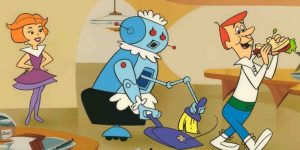
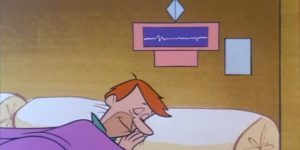


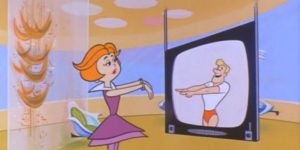
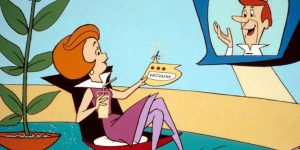





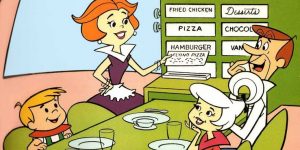
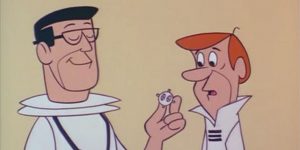
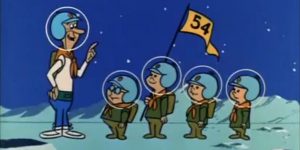

Recent Comments